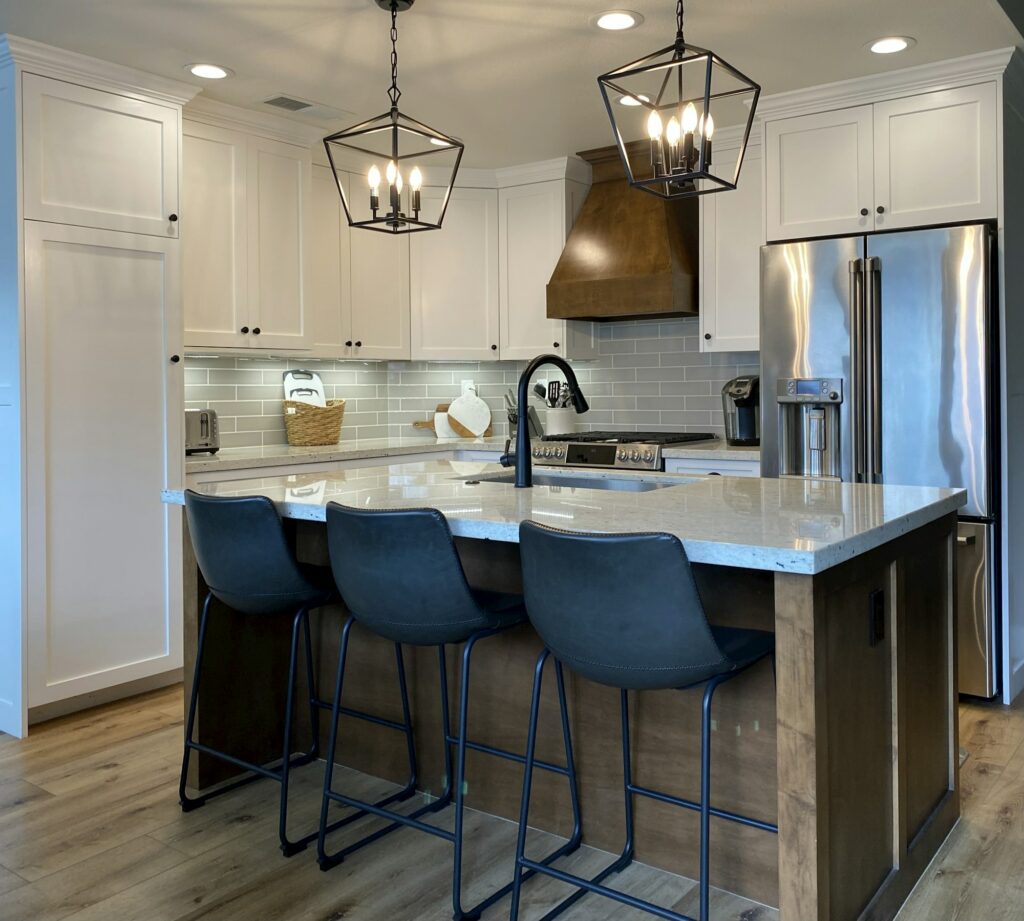Many homeowners dream of transforming their old, outdated kitchens into sleek, modern spaces that are both functional and beautiful. Kitchen remodeling projects can be daunting, but with the right guidance and tips, the process can be smooth and successful. Here are seven vital tips to help you navigate your kitchen remodel with ease and achieve the stunning results you desire.
Table of Contents
ToggleDefining Your Budget and Financing Options
Establishing a Realistic Budget
Consider how much you are willing to invest in the renovation and what aspects of the kitchen are a priority for you. Set a budget that allows for flexibility in case unexpected expenses arise during the project. Any upgrades or changes to the initial plan should be carefully evaluated to stay within your financial means.
Exploring Financial Assistance and Loans
Financing your project through a loan can provide you with the funds needed to complete your renovation without draining your savings. Various banks and financial institutions offer home improvement loans with competitive interest rates. It’s important to weigh the pros and cons of different loan options to determine which one best suits your needs. Consider consulting with a financial advisor to help you make an informed decision.
The world of home improvement loans can be overwhelming, but with careful research and guidance, you can find a financing option that works for you. Be sure to compare interest rates, repayment terms, and any additional fees associated with the loan. The key is to choose a loan that aligns with your budget and financial goals, allowing you to create the kitchen of your dreams without compromising your financial stability.
Planning and Designing Your Dream Kitchen
You’ve decided to launch a kitchen remodeling project, and now the exciting journey of planning and designing your dream kitchen begins. This phase is crucial as it lays the foundation for a successful renovation that meets your needs, style, and budget. By following these necessary tips, you can ensure a smooth and efficient process that results in the kitchen of your dreams.
The Role of a Professional Designer
Professional designers play a vital role in bringing your dream kitchen to life. Their expertise and creativity can help you navigate through the myriad of options available, ensuring that your vision is realized within the constraints of practicality and functionality. A designer will work with you to understand your requirements, style preferences, and budget, translating them into a cohesive design that maximizes the space’s potential while reflecting your unique taste.
Selecting a Functional Layout
When deciding on a layout, consider the classic kitchen work triangle, which connects the three main work areas – the sink, the stove, and the refrigerator. This design principle ensures a smooth workflow and minimizes unnecessary steps while working in the kitchen.

With careful consideration of your cooking habits and lifestyle, you can choose a layout that suits your needs. Whether it’s a galley, U-shaped, L-shaped, or island kitchen, each layout has its advantages depending on the space available and your preferences. Consulting with a professional designer can help you make an informed decision based on your specific requirements.
Choosing the Right Materials and Appliances
Material Quality and Durability
Now, when it comes to selecting materials for your kitchen remodeling project, quality and durability should be at the top of your list. Investing in high-quality materials may require a larger upfront cost, but it will save you money in the long run by ensuring your kitchen components last for years to come. Look for materials that are resistant to stains, scratches, and heat to ensure they can withstand the daily wear and tear of a busy kitchen.
Balancing Aesthetics and Practicality
Choosing the right materials for your kitchen is not only about durability but also about striking the perfect balance between aesthetics and practicality. While you want your kitchen to look beautiful, it is important to choose materials that are functional and easy to maintain. Consider factors like ease of cleaning, resistance to moisture, and compatibility with your lifestyle when making material choices.
Finding and Working with Kitchen Remodeling Contractors
Selecting a Reputable Contractor
Look for contractors who have experience in kitchen remodeling and have a portfolio of successfully completed projects. It’s also important to verify that the contractor is licensed, insured, and bonded to protect yourself and your investment. Take the time to research different contractors, read reviews, and ask for recommendations from friends and family.
Communication and Project Management
With any home renovation project, clear communication and effective project management are key to a successful outcome. Make sure to establish open lines of communication with your contractor from the start. Clearly define your expectations, timeline, and budget constraints. Set up regular check-ins to discuss progress, address any concerns, and make necessary adjustments along the way. A good contractor will keep you updated on the project’s status and be responsive to any questions or issues that arise.
Understanding the importance of communication and project management cannot be overstated. By maintaining regular contact with your contractor, you can address any issues that may arise promptly and ensure that the project stays on track. Be proactive in communicating your needs and preferences, and don’t hesitate to ask for updates or clarification if needed. A well-managed project will not only result in a successful kitchen remodel but also a positive experience for everyone involved.
Assessing and Adapting to Structural Constraints
Dealing with Electrical and Plumbing Issues
Structural constraints in a kitchen remodeling project often involve dealing with electrical and plumbing issues. Before making any design plans, it is crucial to assess the current state of the electrical and plumbing systems in your kitchen. Ensure that they are up to code and can support the changes you have in mind for your new kitchen layout.
Overcoming Space and Layout Challenges
Structural constraints may present challenges when it comes to the space and layout of your kitchen. To overcome these challenges, consider working with a professional designer who can help you maximize the use of your available space. They can offer creative solutions such as adding storage options, reconfiguring the layout, or even expanding the kitchen if feasible.
Understanding how to work within the structural constraints of your kitchen is crucial for a successful remodeling project. By addressing electrical and plumbing issues and finding innovative ways to overcome space and layout challenges, you can transform your kitchen into a functional and beautiful space that meets your needs and enhances your home’s value.
Managing the Remodeling Process
Developing a Timeline and Schedule
Remodeling your kitchen requires careful planning and organization to ensure a successful outcome. One key aspect of managing the remodeling process is developing a detailed timeline and schedule. This will help you stay on track and make sure that all tasks are completed in a timely manner.
Handling Disruptions and Living Arrangements
For many homeowners, one of the biggest challenges during a kitchen remodel is dealing with disruptions to their daily routine and living arrangements. It’s important to plan ahead and consider how you will manage these disruptions, whether it’s setting up a temporary kitchen space or making alternative living arrangements during the construction phase.
Plus, communication with your contractor is key in minimizing disruptions and ensuring that the project stays on track. Make sure to discuss your expectations regarding working hours, noise levels, and other potential disruptions upfront to avoid any misunderstandings.
Paying Attention to the Details
Many homeowners initiate on kitchen remodeling projects with the goal of creating a space that reflects their personal style and incorporates the latest design trends. The key to a successful renovation lies in paying attention to the details, from choosing the right materials and finishes to ensuring that the layout is both functional and beautiful.

Incorporating Personal Touches and Trends
With a plethora of design options available, it’s crucial to strike a balance between incorporating personal touches and following current trends. Whether you opt for a timeless look or a more contemporary style, consider elements that reflect your personality, such as unique lighting fixtures, custom cabinetry, or a bold color scheme. By blending your individual preferences with popular design trends, you can create a kitchen that is both visually appealing and uniquely yours.
Ensuring Quality Control and Inspections
Ensuring that your kitchen remodeling project meets high-quality standards requires attention to detail and thorough inspections throughout the process. From the initial demolition to the final installation of fixtures and appliances, it’s imperative to have a quality control plan in place to address any issues that may arise. Working with reputable contractors and scheduling regular inspections can help prevent costly mistakes and ensure that your new kitchen meets your expectations.
Control each stage of the remodeling process, from the selection of materials to the final walkthrough, to maintain quality standards and avoid potential setbacks. By staying actively involved in the project and addressing any concerns promptly, you can help guarantee a successful outcome and a kitchen that you will love for years to come.
Post-Completion Checklist
Attention to detail doesn’t stop once the construction phase is complete. Creating a post-completion checklist can help ensure that all aspects of your new kitchen have been properly addressed before you sign off on the project. From checking for any remaining punch list items to verifying warranties and maintenance requirements, a thorough inspection can give you peace of mind and help avoid future complications.
Personalize your post-completion checklist by including specific items that are important to you, such as testing all appliances, inspecting the functionality of cabinets and drawers, and verifying that all finish work is up to your standards. By paying attention to these details, you can enjoy a seamless transition into your newly remodeled kitchen and address any lingering concerns before they become larger issues.
Enjoying and Maintaining Your New Kitchen
Incorporating a mix of practicality and aesthetics is imperative when it comes to enjoying and maintaining your new kitchen. Take the time to familiarize yourself with the care instructions for your new countertops, cabinets, and appliances to ensure their longevity. Additionally, consider establishing a cleaning routine that keeps your kitchen looking its best while preserving the investment you’ve made in your remodel.
Plus, don’t forget to take advantage of your upgraded space by hosting gatherings with family and friends. A well-designed kitchen is not only a functional workspace but also a place to create lasting memories. By striking a balance between functionality and style and incorporating your personal touches, you can enjoy and maintain your new kitchen for years to come.
FAQ
Q: What are the benefits of kitchen remodeling projects?
A: Kitchen remodeling projects can enhance the functionality, appearance, and value of your home. By updating appliances, cabinets, and countertops, you can create a more efficient and aesthetically pleasing space for cooking and entertaining.
Q: How should I plan for a successful kitchen remodeling project?
A: To ensure a successful kitchen remodeling project, start by setting a budget and determining your goals. Research different design styles and layouts that suit your needs. Hire a reputable contractor, obtain the necessary permits, and create a detailed timeline for the project.
Q: What are some vital tips for a successful kitchen remodeling project?
A:
1. Set a realistic budget and stick to it to avoid overspending.
2. Choose high-quality materials that are durable and easy to maintain.
3. Consider the kitchen layout and traffic flow to maximize efficiency.
4. Select energy-efficient appliances to save on utility costs.
5. Incorporate adequate lighting for functionality and ambiance.
6. Communicate effectively with your contractor to ensure the project stays on track.
7. Don’t forget about the finishing touches, such as hardware and accessories, to complete the look of your new kitchen.








